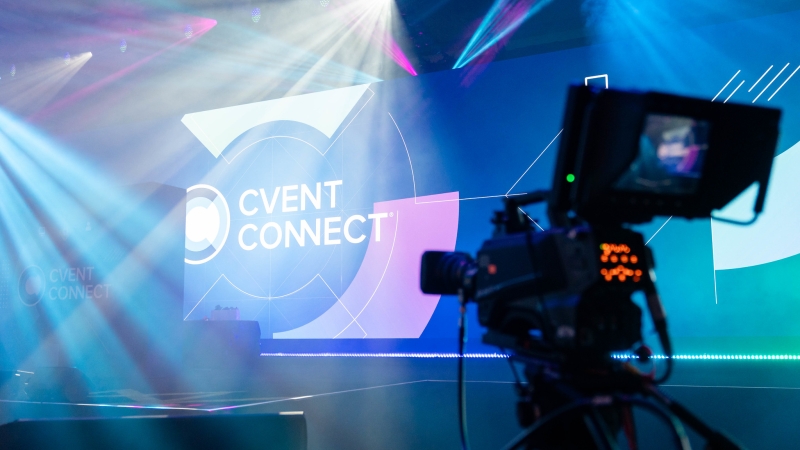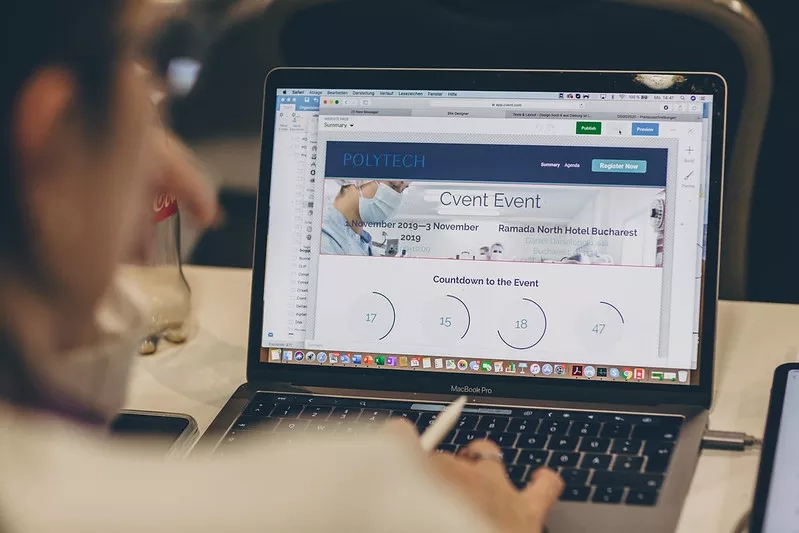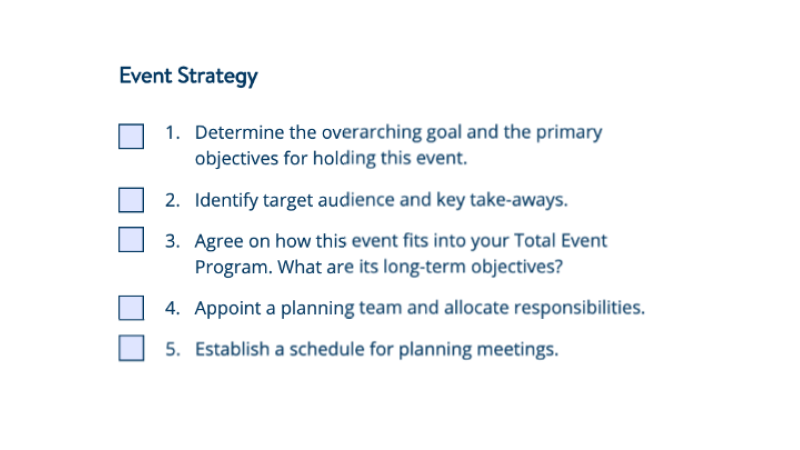In the ever-changing landscape of event planning, live event streaming serves as an innovative tool that is transforming how we share and engage with events. In fact, live streaming now accounts for 23% of global viewing time.
But what is a livestream event? Simply put, a livestream event is a live, online broadcast of an activity or occasion that viewers can watch and engage with in real time. It's facilitated through digital platforms like social media, streaming services, or video conferencing tools, providing a virtual experience for global audiences to participate remotely.
Whether you're a business looking to connect globally, an organization seeking to unite members from different locations, or an individual eager to share a significant occasion, event live streaming holds a ton of potential. Throughout this blog, I’ll guide you through the dynamic world of live event streaming, exploring its numerous benefits, outlining best practices to enhance virtual experiences, and offering a comprehensive guide on executing seamless broadcasts.
Benefits of Live Event Streaming
So, why livestream an event? Live event streaming has become an invaluable tool for individuals, businesses, and organizations looking to connect with audiences around the world. This integration of technology and live events is revolutionizing how events are experienced and offers myriad benefits across business interests.
Global Reach and Audience Expansion
One of the primary advantages of live event streaming is the ability to broadcast live event content to a broader audience. Regardless of geographical location, individuals from different corners of the world can tune in to your event.
Increased Engagement and Interactivity
Event live streaming fosters a sense of immediacy and interactivity. Viewers can actively participate through comments, likes, and real-time discussions. This engagement not only enhances the overall viewer experience but also provides organizers with valuable feedback and insights, helping them tailor future events to audience preferences.
Cost-Efficiency and Accessibility
Traditional events often involve significant costs related to venue rental, equipment, and travel expenses. Live streaming eliminates many of these expenses, making it a cost-effective alternative. Moreover, it enhances accessibility for individuals facing physical or financial constraints preventing them from attending the event in person.
Extended Content Lifespan
Live-streamed events are not limited to the moment they occur. Recordings can be repurposed as on-demand content, creating a lasting digital asset. This allows individuals who couldn't attend the live event to catch up later, extending the lifespan and value of the content.
Brand Exposure and Marketing Opportunities
Live event streaming serves as a powerful marketing tool, providing a platform for increased brand exposure. Social media integration and sharing options allow viewers to spread the word about your event, reaching a wider audience and potentially attracting new followers or customers.
Monetization and Revenue Generation
Live streaming opens up monetization opportunities. Whether through ticket sales, sponsorships, or pay-per-view models, organizers can generate revenue directly from their live events. This additional income stream can contribute to the sustainability and success of future events.
Flexibility and Adaptability
Live event streaming offers flexibility in terms of content delivery. It accommodates various event formats, from conferences and seminars to product launches and entertainment shows. This adaptability makes it a versatile solution for a wide range of industries and purposes.
Real-Time Analytics and Data Insights
Live streaming event platforms provide organizers with real-time analytics and data insights. This valuable information includes viewer demographics, event engagement metrics, and viewer behavior. These insights enable organizers to refine their strategies and content for future events.
Best Practices for Successful Live Event Streaming
Live event streaming is a powerful tool that, when executed effectively, can enhance engagement, broaden reach, and leave a lasting impression on your audience. Explore the key strategies and essential practices that set the stage for polished, professional, and engaging virtual events.
Define Your Objectives
Before diving into the event technology, clarify the purpose of your livestream. Are you aiming to reach a wider audience, drive engagement, or generate revenue? Understanding your objectives will guide your decisions throughout the planning and execution phases.
Invest in High-Quality Equipment
Prioritize audio and video quality by investing in professional-grade equipment. Use a high-definition camera, a quality microphone, and adequate lighting to create a visually and audibly appealing livestream. Clear and crisp content enhances viewer engagement.
Have a Stable Internet Connection
A reliable internet connection is non-negotiable for streaming events. Ensure sufficient bandwidth to prevent buffering or dropouts during the livestream. Consider using a wired connection instead of Wi-Fi to guarantee stability.
Promote the Livestream in Advance
Build anticipation by promoting your livestream well in advance. Leverage social media, email newsletters, and other communication channels to inform your audience about the upcoming event. Create engaging event marketing materials and countdowns to generate excitement.
Plan and Rehearse
Successful live event streaming starts with meticulous planning. Outline the event itinerary, script, and key talking points. Conduct rehearsals to familiarize all participants with the flow, ensuring a polished and professional presentation during the live broadcast.
Provide Clear Calls-to-Action
Guide your audience on the desired actions during and after the livestream. Whether asking your audience to visit a website, subscribe to a channel, or participate in a survey, make your calls to action clear and accessible throughout the event.
Monitor Analytics and Adjust Accordingly
Utilize the analytics provided by the livestreaming platform to gather insights into viewer behavior. Pay attention to metrics such as peak viewership, event engagement levels, and watch time. Use this data to refine your strategy for future livestreams.
Choosing the Right Livestreaming Platform
The list of event livestreaming services is ever-growing, with the virtual event platform market expected to grow to $30.6 billion by 2027. Selecting the appropriate livestreaming platform is a critical decision that significantly influences the success of your event. Consider the following factors to make an informed choice.
Define Your Objectives
Begin by clearly outlining your event goals. Are you aiming for maximum reach, robust engagement, or monetization? Different livestreaming event platforms offer varied features and strengths, so align your objectives with the platform that best caters to your needs.
Know Your Audience
Understand your target audience and their preferred online platforms. Whether it's YouTube, Facebook, Twitch, or specialized business platforms like Zoom or Microsoft Teams, choose a platform where your audience will likely be active to maximize visibility.
Assess Platform Features
Evaluate the features each platform provides. Consider aspects such as interactive tools, chat functionality, monetization options, and analytics. The platform's feature set should align with your event's requirements and the level of audience engagement you seek.
Consider Ease of Use
Opt for a platform that is user-friendly for both organizers and viewers. A platform with intuitive controls and clear instructions simplifies the streaming process and enhances the overall user experience.
Review Monetization Options
If your event involves revenue generation, assess the platform's monetization capabilities. Some platforms support ticket sales, sponsorships, or pay-per-view models. Choose a platform that aligns with your event's financial objectives.
Check Platform Support and Resources
Ensure that the platform provides reliable customer support and ample resources. Responsive customer service and comprehensive documentation can be invaluable if you encounter issues or need guidance during the virtual event.
Explore Integration Options
Consider the platform's compatibility with other tools and software. Integration with marketing tools, registration systems, and post-event analytics can streamline your workflow and enhance the overall efficiency of your event.
Examine Costs and Budget
Evaluate the costs associated with each platform, including any subscription fees, transaction costs, or additional charges. Align your choice with your budget while ensuring the selected platform offers the necessary features for your event's success.
How to Livestream Events: A Step-by-Step Guide
Whether you're planning a business conference, a product launch, or a personal celebration, mastering the art of livestreaming requires careful planning and execution. Here's a step-by-step guide to help you navigate the process seamlessly.
Step 1: Plan Your Content
Create a detailed outline or script for your livestream. Plan the structure of your event, including key talking points, presentations, and interactive elements. A well-thought-out plan ensures a smooth flow and keeps your audience engaged.
Step 2: Set Up Your Livestreaming Equipment
Test your equipment and set up your livestreaming platform well in advance. Check camera angles, audio levels, and lighting. Familiarize yourself with the platform's features, such as chat and interactive tools.
Step 3: Start Your Livestream
Once your equipment is set up and you've tested everything to ensure it's functioning correctly, it's time to start your livestream. The steps to initiate the livestream vary based on the platform you’re using, so it's always advisable to check the latest guidelines provided by the specific livestreaming service you choose.
Step 4: Engage Your Audience
During the livestream, respond to comments and questions, conduct polls, and encourage viewers to participate. This interaction not only enhances the viewer experience but also creates a sense of community. The beauty of a live stream versus pre-recorded content is that your audience has the opportunity to engage with you and your content in real-time. Monitor the live chat or comments section for viewer interactions and ensure everything is running smoothly throughout the event.
Step 5: Monitor Analytics and Adjust as Needed
Most livestreaming event platforms provide analytics and viewer insights. Monitor these metrics, such as peak viewership times and event engagement levels, to understand your audience's behavior. Use this data to refine your strategy for future livestreams.
Step 6: Post-Event Engagement and Follow-Up
After the livestream, continue engagement by responding to comments and questions and expressing gratitude to your audience. Share highlights and repurpose content for on-demand viewing,
Step 7: Evaluate and Improve
Conduct a post-event evaluation to gather feedback and identify what worked well and areas for improvement. Use this feedback to refine your approach for future livestreams.
Elevate Your Livestreaming Events
In the dynamic landscape of modern communication, live event streaming has emerged as a transformative force. The global reach offered by virtual events allows events to transcend physical limitations, opening doors to audiences that might have otherwise been inaccessible. The interactive nature of livestreams fosters real-time engagement, transforming passive viewers into active participants and creating a sense of community that extends beyond the event's duration.
From planning and equipment selection to event marketing and engagement strategies, mastering the intricacies of live event streaming requires attention to detail and a commitment to excellence.
The right virtual or hybrid events platform, high-quality equipment, and thoughtful content planning set the stage for an immersive viewer experience.










